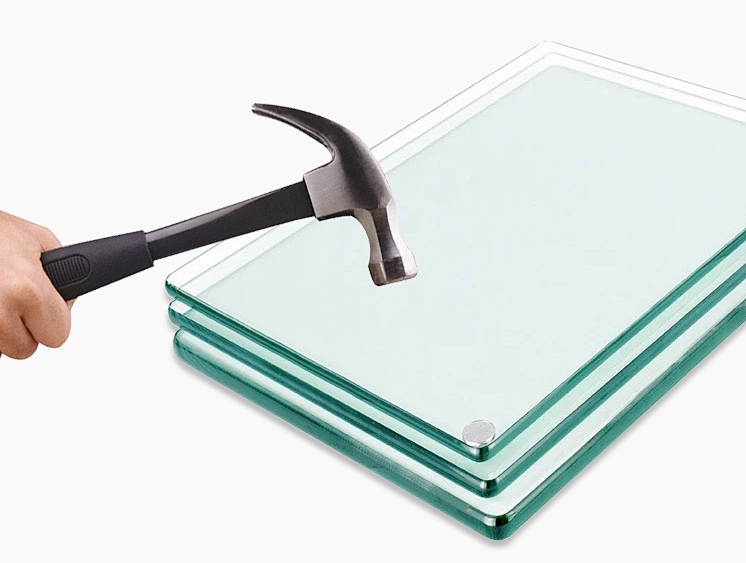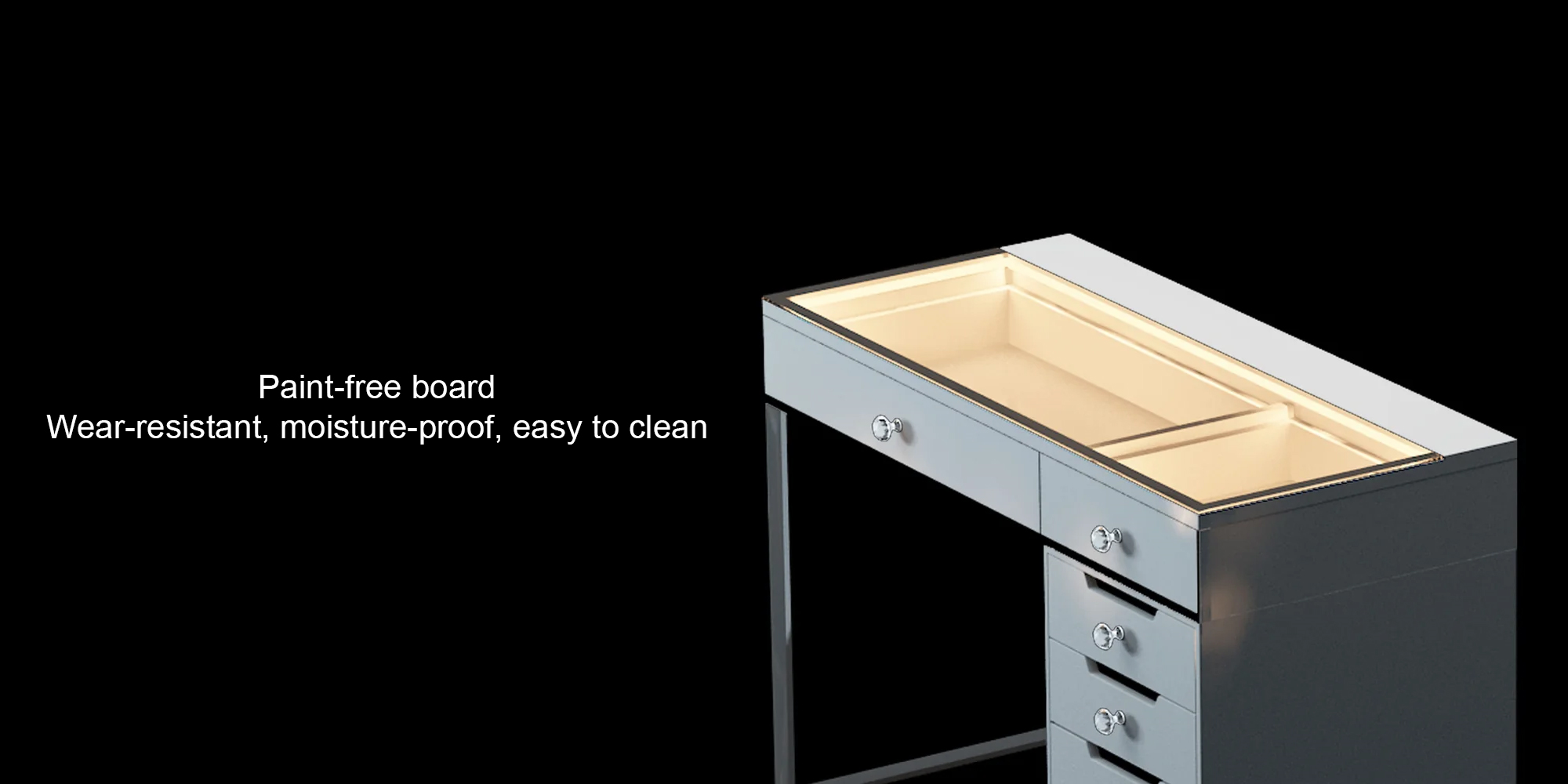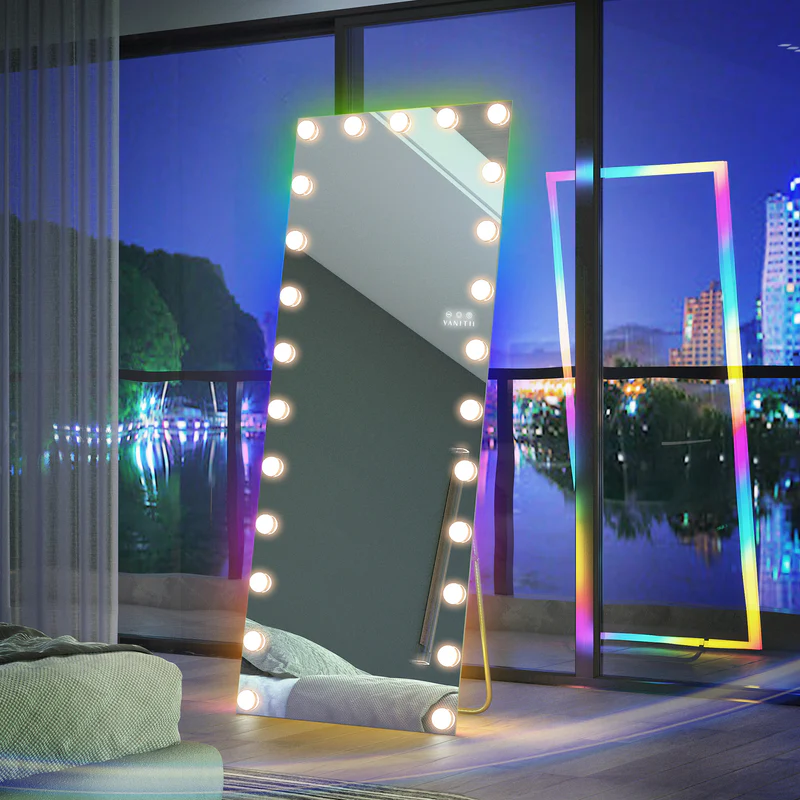A vanity mirror is an essential part of any bedroom or dressing area, and choosing the right type of glass matters for both safety and style. Tempered and laminated glass are the two main options you'll find, each with its own benefits. Your choice will affect how the mirror looks, how safe it is, and how well it fits your space. This guide will help you pick the right type for your needs.

What Is Tempered Glass?
Tempered glass is specially treated glass that offers superior strength and safety features compared to standard glass.
How Tempered Glass Is Made
The manufacturing process starts with high-quality glass sheets. These sheets go through intense heating at 600°C (1112°F), followed by rapid cooling using air blasts. This quick cooling creates surface tension that strengthens the glass. The outer surface compresses while the inner core remains in tension, giving the glass its distinctive properties.
Key Benefits of Tempered Glass
Tempered glass stands out in several ways:
1. Superior Strength
The tempering process makes this glass 4-5 times stronger than regular glass. This extra strength makes it an excellent choice for frequently used mirrors.
2. Safety Features
If broken, tempered glass crumbles into small, rounded pieces instead of sharp shards. This special breaking pattern significantly reduces the risk of injury.
3. Temperature Resistant
Unlike regular glass, tempered glass handles temperature changes well. It won't crack when exposed to moderate heat or cold, making it suitable for areas near windows.
4. Crystal Clear Views
The tempering process doesn't affect the glass's clarity. You'll get a clean, accurate reflection without distortion, which is crucial for a vanity mirror.
What Is Laminated Glass?
Laminated glass combines multiple layers of glass to create a safer, more versatile mirror option. Here's what you need to know about this specialized glass type.
How Laminated Glass Is Made
The production of laminated glass involves bonding two or more sheets of glass together with a strong, clear plastic layer called PVB (polyvinyl butyral). This plastic layer is placed between the glass sheets, then heated and pressed. The process creates a strong bond that turns multiple pieces into a single, durable unit.
Key Benefits of Laminated Glass
Laminated glass offers several unique advantages:
1. Safety First
When laminated glass breaks, the pieces stick to the plastic layer instead of falling. This feature keeps the mirror intact even after damage, preventing glass from scattering across your floor.
2. UV Protection
The PVB layer blocks most harmful UV rays. This protection helps prevent fading in nearby furniture and fabrics, making it particularly useful in sunny rooms.
3. Sound Reduction
The plastic layer between glass sheets reduces noise transmission. This feature can be helpful if your vanity area shares a wall with a noisy space.
4. Color Options
The PVB layer can include slight tints if desired. While most people choose clear glass for vanity mirrors, you have the option to add subtle color effects to match your room's design.

Which is the Right Glass for Your Vanity Mirror: A Complete Comparison
When selecting a vanity mirror, the type of glass you choose affects everything from safety to style. Here's what you need to know about both options.
Safety and Protection
Tempered glass offers excellent resistance to daily bumps and impacts, breaking into small rounded pieces if damaged. This makes it particularly suitable for busy areas where accidents might happen.
Laminated glass takes a different approach to safety. When broken, it holds together as one piece thanks to its protective inner layer. This feature makes it an excellent choice for family homes, especially in children's rooms.
Appearance and Reflection Quality
Your mirror's appearance matters for both function and style. Tempered glass provides the clearest, most accurate reflections with no distortion. Its edges can be polished to a clean, professional finish that works well with any frame style.
Laminated glass maintains good reflection quality, though you might notice a slight difference due to its layered construction. It offers more options for decorative edges and can include subtle tints to complement your room's design. Both types work well with vanity lighting, but laminated glass's extra thickness might require adjustments to light placement.
So it’s really important to choose the best vanity mirror.
Cost and Value
The price difference between these options is worth considering. Tempered glass typically costs less to purchase and install initially. While laminated glass has a higher upfront cost, its durability and safety features might save money over time by reducing replacement needs.
Professional installation is recommended for both types, with similar installation costs. The main price difference comes from the materials themselves.
Practical Installation Considerations
Weight plays a key role in mounting your vanity mirror. Tempered glass is lighter, making it easier to install and requiring less structural support. Laminated glass weighs more due to its multiple layers, so you'll need stronger wall mounts or furniture support.
Before installation, check your vanity table's weight capacity or wall mount specifications. Your mounting method must match the glass weight for safe, stable installation. Most standard vanity furniture can handle either type, but always verify weight limits before making your final choice.
Best Places to Use Each Type of Vanity Mirror
Different spaces have different needs. Here's where each type of glass works best in your home.
Where Tempered Glass Mirrors Excel
1. Full-Length Mirrors and Dressing Areas
Tempered glass mirrors work exceptionally well for full-length designs. Their lighter weight makes wall or door mounting simpler and more secure, perfect for creating a complete dressing area.
2. Sunny Spaces and Window Areas
These mirrors thrive in bright spaces. The heat-resistant properties of tempered glass prevent warping or cracking near windows or in sun-filled dressing areas, keeping reflections crystal clear regardless of temperature changes.
3. Vanity Tables
Dressing tables pair naturally with tempered glass mirrors. The distortion-free surface ensures accurate reflections for detailed grooming and makeup application. The glass's strength handles frequent adjustments well, making it ideal for tabletop vanities.
Where Laminated Glass Mirrors Work Best
1. Children's Rooms and Family Spaces
Laminated glass mirrors provide extra safety in family areas. The shatter-resistant design keeps glass contained if accidents happen, making them perfect for children's rooms and shared family dressing areas.
2. Apartments and Shared Walls
The sound-dampening qualities of laminated glass make these mirrors excellent choices for apartments or rooms with shared walls. They help reduce noise transmission, creating a more peaceful environment in multi-unit buildings.
3. Sun-Exposed Rooms
These mirrors excel in rooms with significant sun exposure. Their UV-protective layer helps shield furniture and fabrics from sun damage, making them ideal for bright, south-facing rooms or spaces with large windows. This protection extends the life of your interior furnishings while maintaining the mirror's functionality.
How to Make Your Final Vanity Mirror Choice: A Step-by-Step Guide
Making the right choice involves considering your space, style, and budget. Let's break down these key factors to help you decide.
Check Your Space
Look at where you'll put your mirror. Measure the wall space and make sure there's enough room between your vanity and where you'll sit. Check if it's a corner space or flat wall, as this affects which mirror will work best.
Look at the natural light in your room. Bright, sunny rooms might need UV protection, while darker rooms need mirrors that reflect light well. Think about where your current lights are to avoid glare on the mirror.Remember,it’s not good to place your vanity mirror in front of your bed.
Think about how you'll use the mirror. A shared mirror needs to be more durable than one in a private room. If you have children, safety might be your top concern.And it’s also important to consider its Feng Shui.
Consider Your Style
Make sure your frame choice works with the glass type. Tempered glass works well with lighter frames, while laminated glass can support heavier ones. Just remember that heavier frames need stronger mounts.
The mirror should match your room's style. Simple frames often work in modern rooms, while detailed frames suit traditional spaces. Decide if you want the mirror to stand out or blend in.
Your mirror should be about 70-80% as wide as your vanity table. Think about whether you need to see your full outfit or just from chest up.
Think About Cost
Compare total costs, not just the mirror price. Include installation and any special mounting hardware you might need.
Read the warranty terms carefully. Keep all paperwork and care instructions for future reference.
Consider how long you'll keep the mirror. If you might move soon, a lighter tempered glass mirror could be better. For a permanent setup, laminated glass might be worth the extra cost.

Tempered or Laminated: Select Your Vanity Mirror Glass!
If you want a lightweight, clear mirror that costs less, choose tempered glass - it's great for full-length mirrors and sunny spots. If you need extra safety for kids, UV protection, or sound control, go with laminated glass. Think about your space and how you'll use the mirror, then make your choice based on what matters most to you.




Leave a comment
This site is protected by hCaptcha and the hCaptcha Privacy Policy and Terms of Service apply.